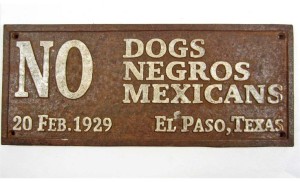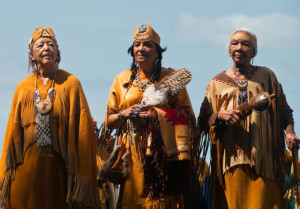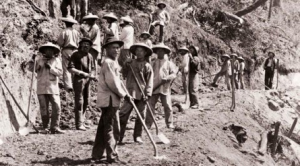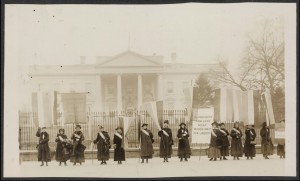By: Patricia Ann Talley, MBA and Editor
Immigration is a Key Issue Facing Mexico and the USA
Social media reports stories of Americans saying, “Get out of my country! Go back to Mexico (China, Africa, etc.)” Immigration is one of the key issues facing Mexico and the United States today.
To make an intelligent decision on this topic, one must understand the true history of immigration in America – a history that is not often taught.
The USA was Formed as a Nation for “Whites-Only”
Most of the world and most USA citizens think of America as a “land of immigrants.” But, the fact is that initially, by law, the United States only permitted “white immigrants” – Native Americans, Africans, and all others were excluded from its citizenship. Racial and nationality restrictions for immigration in America did not end until 1965, and the country still has a “failed” system for Latin and Asian immigrants.
Why Is This Important to Know?
The USA is in the process of forming new policies regarding immigration and the pathway to citizenship. American citizens will vote to support or reject these policies. Again, knowing the truth about history helps one to make intelligent decisions about the future.
Also, the demographics of America are changing. Children of color – Latinos, African-Americans, and Asian-Americans – comprise the majority of school-aged children. It is critical to the economy of the country that these young people participate in its future prosperity. So there is a need for a much broader multi-cultural perspective.
Public Broadcast System (PBS) Films on Race and Immigration
In 2012, the Public Broadcast System (PBS) produced a film about race, immigration, the pathway to citizenship, and voting rights in America. Here are some short videos that will explain this history to you.
1790 Naturalization Act – The First Immigration Law for “Whites Only”
Upon declaring independence from England, the leaders of the new nation wanted to create a distinct American nationality. The first immigration legislation was in 1790, which allowed individuals to apply for citizenship if they were a “free white person,” being of good character and living in the United States for two years. This excluded Native Americans, white indentured servants, most white women, free and enslaved Africans, and all other non-white persons born on American soil.
Native Americans did not receive citizenship in the new nation. Photo: Elder women of the Shinnecock Nation by Andrew Brannan from www.vice.com
Birthright citizenship was not granted to most white women, white indentured servants, Native Americans, free and enslaved African Americans, and all other non-white persons who were born in America.
The Civil War (1861-1865) – The Confederacy Establishs a White Nation
Most white Southerners believed that slavery was a God-given right for the “superior race” and that they should be the masters of the inferior enslaved Africans. Perhaps of similar importance were the basic economic advantages of using enslaved labor to work on the plantations.
In 1861, several southern states renounced the U.S. Constitution and the country’s attempts to end slavery and formed the Confederate Nation. This new nation rejected the concept of “liberty, justice, and equality for all.”
The Confederate Vice President, Alexander Stephens stated, “Our new government is founded upon exactly the opposite idea; its foundations are laid, its cornerstone rest upon the great truth that the negro is not equal to the white man, that slavery, subordination to the superior race, is his natural and normal condition. This new government is the first, in the history of the world, based upon this great physical, philosophical, and moral truth.”
14th Amendment (1868) and 15th Amendment (1869) to the US Constitution Grant Citizenship to all American-Born (except Natives); Gives the Vote to Black Men
The 14th Amendment grants citizenship to all persons born or naturalized in the United States, but this did not include Native Americans, who did not receive citizenship until 1924. The 15th Amendment gave citizenship (voting rights) to African males living in the country, but this right was often denied until the Voting Rights Act of 1964.
1882 – The Chinese Exclusion Act
This was the first law to restrict immigration to the United States in any way. For ten years, this act kept Chinese people from immigrating to the United States and prohibited them from becoming citizens. It was passed as a response to growing anxieties over unemployment and declining wages, which many Americans attributed to the Chinese who came to build the railroads in the West.
White working-class Americans thought the Chinese were taking their jobs away, so the government restricted immigration from China.
1896 – US Supreme Court Sets “One Drop Rule” in Support of Racial Apartheid/ Limits Participation of Non-whites
The 1790 Naturalization Act opened immigration and citizenship to “whites” only, but allowed for the importation of enslaved Africans. Following the Civil War to abolish slavery, the 14th and 15th Amendments gave citizenship to “non-whites” living in the country (except Natives).
To maintain its white majority control, the country implemented a strict system of racial segregation, which prevented blacks and people of color from participating in much of its political, social, and economic growth. Therefore, legislation was implemented to determine race. In 1896, the Court ruled that race is determined by “one drop” of black blood. Racial apartheid extended to all “non-whites” in America.
1919 – 19th Amendment Gives Voting Rights to White Women
White women gained full citizenship and the right to vote during the Women’s Suffrage Movement, but it excluded women of color. Racial segregationists supported the women’s movement since their vote would help maintain them maintain political and economic power. Native American women did not receive the right to vote until 1962; Black women and other women of color were often denied this right until the Voting Rights Act of 1964.
1922 – Japanese Immigrants Excluded from Citizenship in Ozawa vs. The United States
Takao Ozawa had lived in the US for 20 years
In 1914, Takao Ozawa, born in Kanagawa, Japan applied for U.S. citizenship after residing in the United States for twenty years. His petition to naturalize was denied since the naturalization laws limited citizenship to “free white persons,” “aliens of African nativity,” and “persons of African descent.”
Ozawa argued that his skin was “lighter” than most. He even showed the court his “white” underarms!
But, the Supreme Court ruled that Ozawa as Japanese did not qualify as Caucasian and was ineligible for citizenship.
1923 – Indian Immigrants Excluded from Citizenship in The United States vs. Bhagat Singh Thind
Bhagat Singh was a US Veteran
In 1923, Bhagat Singh Thind, a native of Punjab, India, applied for citizenship after he was honorably discharged from the U.S. Army in 1918. A veteran, he was denied citizenship under the law which limited naturalization to “free whites” only.
Despite the concession of the courts that Indians were to be considered Caucasians, they also stated that “the average man knows perfectly well that there are unmistakable and profound differences.”
1924 – The Johnson-Reed “Quotas Act” Restricts Immigration Bases on Nation of Origin
The Act was imposed to maintain the country’s white majority population by imposing a “national origins quota” that limited the annual number of immigrants allowed from other countries.
Immigrants of anyone nationality could not exceed 2% of the population of that nationality already residing in the U.S. according to the 1890 census. Since immigration laws had historically restricted non-whites, this Act was to ensure the continuation of a majority white population. Asians were entirely excluded from the quota and were not allowed entry under any circumstances.
1924 – US Grants Citizenship to Native Americans
Until 1924, Native Americans were not citizens of the United States. Many Native Americans had, and still have, separate nations within the U.S. on designated reservation land. In 1924, Congress granted citizenship to all Native Americans born in the U.S. and gave them the right to vote, but many states overtly did not allow Natives to vote until 1962.
1952 – McCarran-Walter Immigration Act Abolished Racial Restrictions
This Act abolished racial restrictions found in United States immigration and naturalization statutes going back to the Naturalization Act of 1790, which had limited naturalization to immigrants who were “free white persons.”
But, the Act retained a quota system for nationalities and regions and eventually established a preference system which determined which ethnic groups were “desirable” immigrants, placing great importance on labor qualifications.
1964 – The Civil Rights Act Outlaws Racial Discrimination
This Act outlawed discrimination and segregation in public facilities, government, and employment based on race, color, religion, sex, or national origin. The Act was an attempt to bring an end to the racial discrimination that influenced policy and limited the rights of all US citizens.
The Civil Rights Act set the basis for the Hart-Cellar Immigration Act of 1965.
1965 – Hart-Cellar Immigration Act Abolishes National Origin Quotas
This Act changed American immigration policy and the racial composition of its population by abolishing the national origins quota system that had been in structure since the 1920s.
The national quota system was replaced with a preference system that focused on immigrants’ skills and family relationships with citizens or residents of the U.S. Before this Act, the majority of US immigrants were from Europe or Canada. After this Act, the majority of immigrants now come from Asia and Latin America, thus changing the racial composition of the US population.
Source: PEW Foundation
But, America Created a System of Undocumented Immigrants from Asia and Latin America
How Does This Affect the Future?
Demographics Show an Ageing White Population; Young Immigrant Workers are Needed
As recently as 1980, 80% of the United States was white, but results of the 2020 Census depict a rapidly changing nation. Demographics show an aging white population on the decline.
By 2042, the US population will be made of less than 50% white people with people of other racial and ethnic groups in the majority. The Hispanic population is driving this change. These young workers will be needed to support the country’s economic system. This demographic change will have an impact on America’s future – particularly as it pertains to politics and leadership!
*About the Author: Patricia Ann Talley, originally from Southfield, Michigan, USA, holds a Master of Business Administration degree from the University of Michigan. She has resided in Mexico for over 20 years where she conducts research in the area of economic development and the preservation of indigenous and African cultures.
References:
American Library of Congress: http://www.americaslibrary.gov/jb/jazz/jb_jazz_citizens_1.html
PBS Election Special: “Race in 2012” http://race2012pbs.org/the-film/description/
Indiana University Library: http://www.indiana.edu/~kdhist/H105-documents-web/week08/naturalization1790.html
Densho Organization Encyclopedia, Naturalization Act of 1790: http://encyclopedia.densho.org/Naturalization_Act_of_1790/
Related Article:














